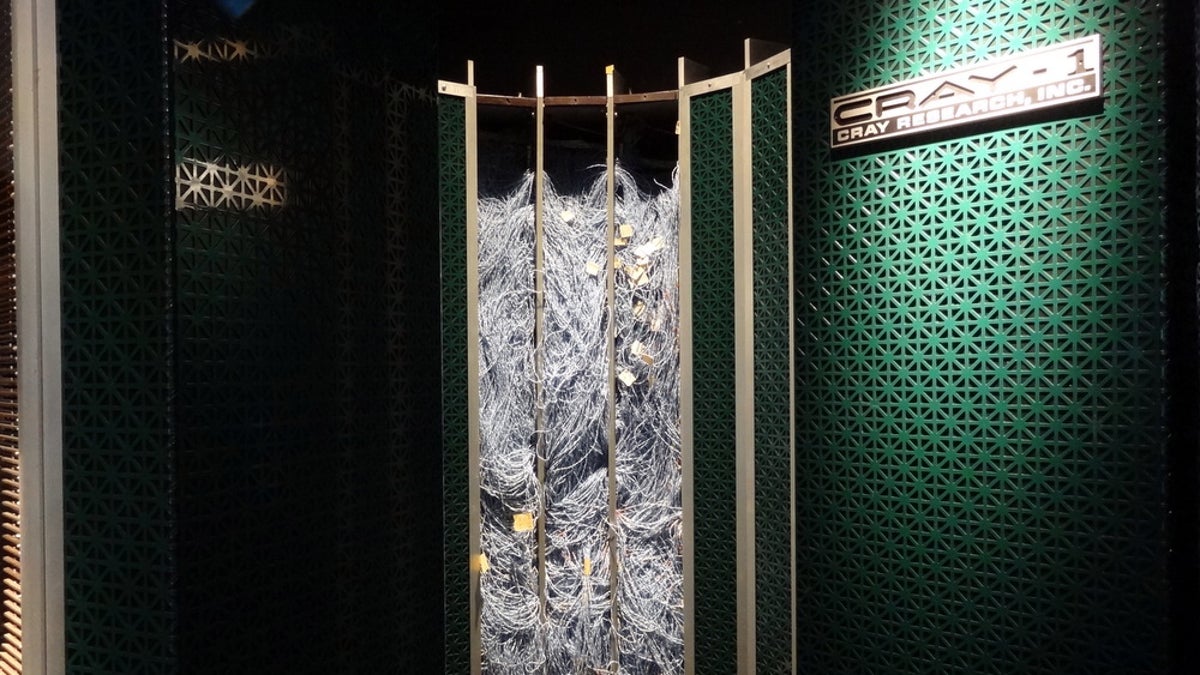Crave visits the Cray-1, a true museum piece
The megaflop-busting Cray-1 made computing history back in 1976. Crave's Nerdy New Mexico arrives in the atomic city of Los Alamos to meet up with with this supercomputing classic.

LOS ALAMOS, N.M. -- Many great masterpieces reside in museums. There's the "Mona Lisa" at the Louvre. "Nighthawks at the Diner" graces the wall at the Art Institute of Chicago. And the Cray-1 sits at the Bradbury Science Museum here in Los Alamos.
The first Cray-1 was installed at Los Alamos National Laboratory in 1976 at a cost of $8.8 million. It set a new world record speed of 160 million floating-point operations per second and boasted 8MB of main memory. According to the museum, it was the first computer to break the megaflop barrier.
By today's hardware standards, the Cray-1 is a great lumbering beast. The dramatic lighting shining on it at the Bradbury exhibit shows off its curves and hulking size. But by 1976 standards, it was a svelte creation whose circular shape kept the complex wiring compact.
To understand how revolutionary the Cray-1 was, we can look back to 1952. The Bradbury Museum's supercomputing exhibit includes a chunk of the MANIAC 1, the lab's first electronic, digital, programmable computer.
MANIAC 1 used 2,400 vacuum tubes and took up as much space as a small elephant. Fast-forward to 1976, and you can see why the Cray-1 was looked upon as a small, powerful computing flower.
Laying modern eyes on the Cray-1, I notice the thick bundles of wires inside, like electronic spaghetti. Benches radiating from the bottom hide the power supplies and look terribly inviting after a long day of tromping around Los Alamos. Dare I say, the Cray-1 is a retro beauty, with all its chunkiness and 1970s-style gratings.
Let's give a cheer to the supercomputers that preceded our little desktops and smartphones of today. Our current computers may not be as visually impressive as the Cray-1, but at least we don't have to save up $8.8 million to break the megaflop barrier.

